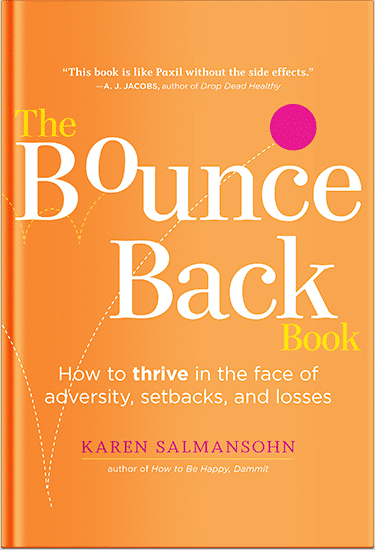 The earlier you start planning for retirement, the more passive wealth you can generate. Harnessing long-term investments doesn’t have to be challenging. Something as simple as compound interest builds small contributions, left along to grow, into substantial withdrawals.
The earlier you start planning for retirement, the more passive wealth you can generate. Harnessing long-term investments doesn’t have to be challenging. Something as simple as compound interest builds small contributions, left along to grow, into substantial withdrawals.
In fact, compound interest is an integral part of your retirement wealth. Why does such a tiny percentage matter so much? We’ll share how wise investments with compounding interest rates can make your Golden Years financially healthy.
What is Compound Interest?
You’ve heard of varying interest rates, especially as they relate to how much money you pay to a creditor. However, when you use interest as an investment, it becomes an asset instead of a debt. There are two main types of interest: simple and compound. Simple interest is calculated based on your initial principal only, while compound interest builds on the first investment plus any capital that accrues.
When you invest in a compound interest product, the total interest per period is added to the principal balance. Interest is calculated on the new total, bringing you higher returns the longer your investment remains untouched. Essentially, you make more money for doing nothing.
Early investors reap the benefits of retirement planning when they have decades to accumulate exponential interest on their principal funds. If they continue to make small contributions over the years, the results magnify.
What Does Compound Interest Look Like In Action?
Let’s look at compound versus simple interest in action with the initial investment of Dr. Galci, a 28-year-old recent medical school graduate with $1,000 to invest in a retirement account. Her chosen product offers a 5% annual compound interest. She plans on retiring in 40 years. What will her initial $1,000 look like if she doesn’t add or withdraw any money from her account?
Doing the Math: Compound Interest in Real Life
The results use this formula: (A=P(1+r)^{t}\), with A = amount after T (time), P = original principal, r = annual interest rate, and t = number of years.
The first year, she’ll earn $50 interest on her initial principal, taking her to $1,050. In the second year, she’ll earn interest on the new total, with a balance forward of $1,102.50. But it starts really gaining traction about Year 15:
- In 15 years, $1,000 will have become $2,078.93.
- In 20 years, it will be $2,653.30.
- In 30 years, she’ll have $4,321.94.
- At retirement, her $1,000 will now be $7,030.99.
The same investment using simple interest would gain her $30 per year, for a total of $2,200 at retirement. Now, consider how this number would change if Dr. Galci continued to contribute regularly to the account. That’s the power of compound interest.
Four things will help your money compound faster: a higher interest rate, frequent contributions from you, a lengthy time spent before you withdraw from the account, and the compounding frequency (whether interest is compounded daily, monthly, or annually).
Is It Too Late to Start Saving?
Regardless of your retirement plan, the sooner you start working on it, the better. This rule is particularly true when it comes to compound interest investments. However, certain portfolio products can still give you some of the power of this type of interest, even if you only have a few years until you plan on retiring. Working with a wealth advisory firm is a wise way to learn about the best investments tailored to your specific goals.
Finding professional financial help is especially crucial if you belong to higher-income professions, such as physicians. Something as simple as creating or revising your prenuptial agreement can significantly impact your future finances, and this is best done with the help of experts like OJM Group.
Even if you’re not investing yet, keeping most of your income in your wallet means understanding how to contribute to your retirement accounts in other ways. For instance, you can maximize tax breaks and take advantage of matching employer contributions with your 401(k) plan, which also leverages compound interest.
Conclusion
Principal, frequency of contributions, and length of time in an account are all vital factors to enjoy the benefits of compound interest when you retire. When you’re ready to get started using this powerful investment strategy, contact a financial advisor to ensure you maximize your new savings tool.
P.S. Before you zip off to your next Internet pit stop, check out these 2 game changers below - that could dramatically upscale your life.
1. Check Out My Book On Enjoying A Well-Lived Life: It’s called "Your To Die For Life: How to Maximize Joy and Minimize Regret Before Your Time Runs Out." Think of it as your life’s manual to cranking up the volume on joy, meaning, and connection. Learn more here.
2. Life Review Therapy - What if you could get a clear picture of where you are versus where you want to be, and find out exactly why you’re not there yet? That’s what Life Review Therapy is all about.. If you’re serious about transforming your life, let’s talk. Learn more HERE.
Think happier. Think calmer.
Think about subscribing for free weekly tools here.
No SPAM, ever! Read the Privacy Policy for more information.
One last step!
Please go to your inbox and click the confirmation link we just emailed you so you can start to get your free weekly NotSalmon Happiness Tools! Plus, you’ll immediately receive a chunklette of Karen’s bestselling Bounce Back Book!


 The earlier you start planning for retirement, the more passive wealth you can generate. Harnessing long-term investments doesn’t have to be challenging. Something as simple as compound interest builds small contributions, left along to grow, into substantial withdrawals.
The earlier you start planning for retirement, the more passive wealth you can generate. Harnessing long-term investments doesn’t have to be challenging. Something as simple as compound interest builds small contributions, left along to grow, into substantial withdrawals.